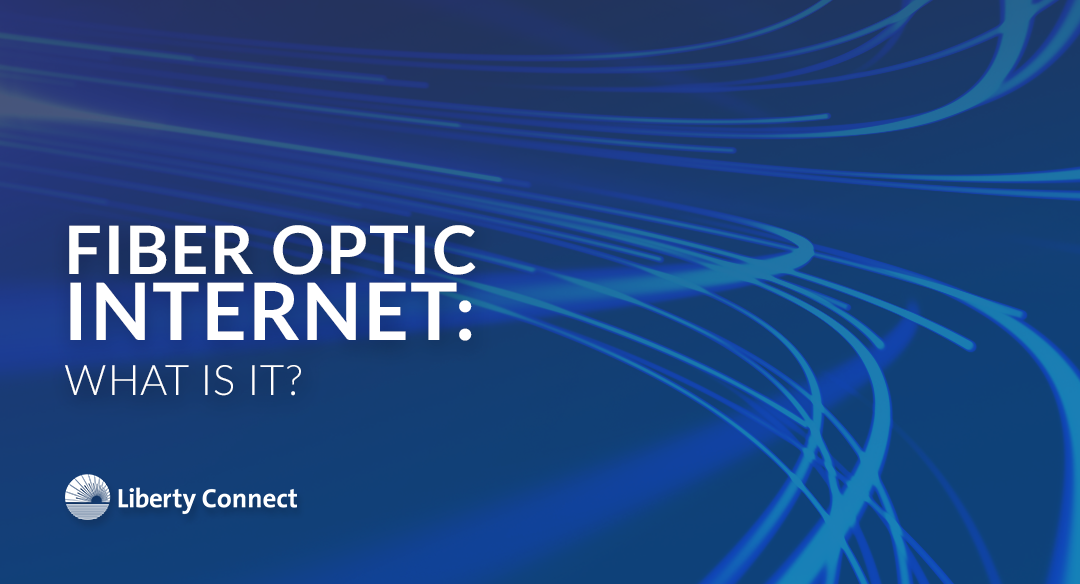In today’s world, every business uses the internet. Some more than others of course, but whether it’s tracking employee time, storing company data, or just communicating through email, if you have a business, you need the internet.
Thankfully, the internet is accessible almost everywhere and in a variety of different forms. But this comes with it’s own set of issues. Fiber, DSL, cable, satellite… oh my! With more internet service options today than ever before, how do you know which is best? And what are the difference between them?
While other options are common and have been widely used for some time, in an effort to keep this short and sweet, we want to focus on the rising star – fiber optic internet.
WHAT IS FIBER OPTIC INTERNET?
Fiber optic internet is the process of accessing the internet through fiber-optic lines. Simple enough, right? Though, we’re willing to bet that isn’t the answer you were looking for when you decided to read this article. So, how does fiber optic internet work?
Unlike cable or DSL which use copper lines to transmit electrical information, fiber optic internet uses small strands of plastic or glass to carry binary transmission of light. This method provides faster speeds and more reliable service.

WHY CHOOSE FIBER OPTIC INTERNET?
There are generally two things that people consider when choosing an internet service: speed and reliability.
Speed depends on the amount of data that the infrastructure can handle. DSL and Cable are limited in the amount of data they can handle due to the copper wires that make up their infrastructure.
Satellite internet has about the same speed as DSL and Cable. While the information is transmitted differently, the distance the information has to travel keeps speeds roughly the same and actually increases the latency.
Since fiber optic lines use modulated light instead of electricity to transmit data, they have a much higher bandwidth capacity – working at speeds up to 100 times faster than Cable, DSL, or Satellite.

FIBER OPTIC INTERNET V CABLE, DSL, SATELLITE
Obviously, in terms of speed, there is no alternative to the fastest-possible speeds provided with fiber optic internet. But what about reliability? Is fiber internet really that much better than traditional types of service?
The short answer? Oh yeah. It’s superior in more ways than one. Here are just a few examples of the advantages of fiber internet and why it is considered more reliable than cable, DSL, and satellite.
- Fiber optic lines are a closed system. This means that they are not effected by electrical or radio interference. Copper lines are great for transmitting electricity, however, they can be negatively affected by electromagnetic or radio interference. If that interference is too strong it can not only reduce the signal strength and speed but it can even cut the signal entirely. Fiber optic lines are more insulated creating a closed system that is much more secure.
- Fiber optic lines carry information further. Lines made of copper can only run for so long before the signal being transferred is repeated. That’s why copper cable links are limited to a distance of less than 400 ft – to maintain signal strength. Fiber optic lines can run nearly 25 miles long and maintain signal strength. That’s 330 times longer than it’s copper counterpart.
- Fiber optic lines are more resistant. Damage and wear and tear are less of a concern with fiber internet. Copper is a soft metal that also conducts heat – making the lines prone to damage. They become weaker as they breakdown over time, which makes them more susceptible to damage through impact and fire hazards. Fiber optic lines are harder more resistant and aren’t a fire hazard. And while copper lines can withstand roughly 25 lbs of pressure, they are again upstaged by fiber optic lines, with the ability to withstand up to 200 lbs of pressure.
All things considered, when it comes to speed and reliability there is no better choice for your business than fiber optic internet. We hope that this article provided you with information you were looking for and that you now have a better understanding of fiber optics and what it means for internet services.

